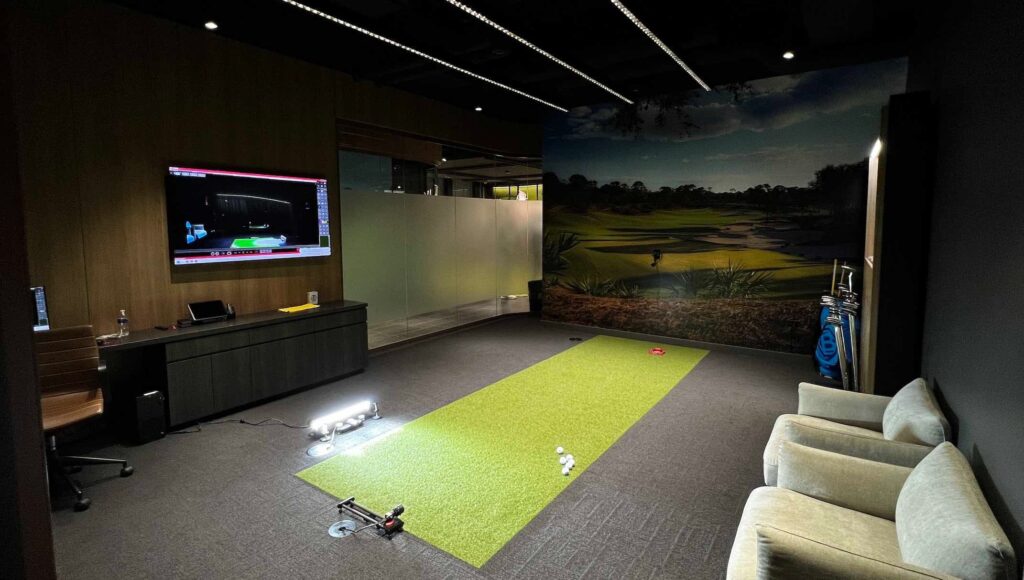Unlocking Your Putting Potential: My Experience with Bettinardi’s Studio B Putter Fitting
Introduction to the Importance of Putter Fitting
Golfers of all skill levels often focus on driver distance and iron accuracy, but many overlook a crucial component: the putter. The putter can account for over 40% of your strokes, making it essential to have the right one in your bag. I recently embarked on a transformative journey at Bettinardi’s Studio B, where I discovered the impact that a proper putter fitting can have on my game. In this article, I will detail my personal experience, introduce you to the world of putter fitting, and explain how the right putter can significantly improve your performance on the greens.
My History with Putters: A Mixed Bag of Choices
For many years, I relied on my trusty Ping Anser-style blade putter, a legacy from my early golfing days. My first putter was a Scotty Cameron 2005 Studio Style Newport 2.5 with a GSS insert, set up to fit my perceived stroke mechanics. Over time, I transitioned to different putters, including a Teryllium II Newport 2, and then to a newer version when it hit the market. Despite the variation in styles and necks, my understanding of what I needed in a putter was rudimentary at best. I was in search of performance but was primarily fitting myself to what I already owned, not what was ideally suited for my unique stroke.
The Game-Changing Experience at Bettinardi’s Studio B
Excited yet apprehensive, I stepped into Bettinardi’s Studio B, located outside of Chicago. The moment I began my fitting, I sensed a shift in my approach to putting. My fitter, Tom Sopic, used cutting-edge technology along with expert observation to assess my putting stroke in real-time. It’s one thing to think you’re putting well, but another entirely to learn, through quantifiable data, what actually is happening during your stroke.
Analyzing My Stroke: Breaking Down the Mechanics
With the help of high-tech camera systems and Quintic putting analysis, Tom quickly identified critical flaws in my stroke. Instead of a natural arc, I was employing a pendulum-style motion, which led to inconsistent results. The analysis revealed that my putter face remained nearly square through most of my stroke, resulting in side-spin issues that were impacting my performance. A few observed metrics indicated that my forward spin was far less than ideal, and the side spin was significantly too high. This revelation prompted a reconsideration of how I viewed putter fitting.
The Putter Selection Process Begins
Following our assessment, we opted to stick with a blade-style putter, as mallets had never resonated with me aesthetically. However, our selection did come with some adjustments. Our goal was to create a putter that catered to my unique mechanics rather than forcing a fit to an existing model. Tom informed me that the ideal putter would be different in length and lie than my previous gamer, which opened up a world of new possibilities.
Finding the Right Specifications: A Perfect Match
Together, we created a custom putter that was three degrees flatter and a half-inch shorter than my previous club. These modifications set my eyes directly over the heel of the putter, correcting the alignment issues noted during our analysis. I was initially surprised; it didn’t feel vastly different from what I was used to, a crucial aspect for anyone wary of drastic changes. This outcome embodied the essence of proper fitting—making subtle yet impactful adjustments.
Experiencing Immediate Results on the Course
With my new Bettinardi BB-28 Slot Back putter in hand, I was eager to put it to the test immediately. The changes we made quickly showed their worth; my forward spins increased significantly while the side spins diminished dramatically. In the initial outings, I averaged 60 RPMs of forward spin with just 12 RPMs of sidespin. This 5-to-1 ratio aligned perfectly with the standards set for optimal putting performance.
Overcoming Initial Adjustments: Building Confidence
It’s essential to acknowledge that despite all the technical improvements, I did face an adjustment period. Transitioning from one putter to another, especially a customized one, can be daunting, particularly when mental blocks about missing short putts come into play. However, by the third round, I began to feel the genuine benefits of my new fitting, and my confidence returned with a renewed vigor that made putting enjoyable again.
The Takeaway: Invest in Your Game
What I learned from this comprehensive fitting experience is simple yet profound: You must get fit for a putter that matches your unique style rather than simply fitting yourself to an existing putter. Investing in a proper putter fitting can range from $100 to $150 but offers significant long-term benefits that far exceed the initial cost. By taking this step, you’re investing in your ability to lower scores and enjoy the game more fully.
Conclusion: Start Your Putters Journey Today
If you’re serious about improving your game, I encourage you to consider a fitting. Whether you’re a seasoned golfer or just starting, the impact that the right putter can have on your performance is undeniable. Don’t just buy a putter; get fit for one. Your game—and your scores—will thank you. For more information on how to find the right putter for your game, check out the various fitting options available at local pro shops or dedicated fitting centers. You owe it to yourself to perform at your best on the greens!
This article provides an in-depth overview of my experience at Bettinardi’s Studio B and reinforces the importance of proper putter fitting. By optimizing for SEO, we ensure reach and visibility to fellow golfers looking for similar insights!


